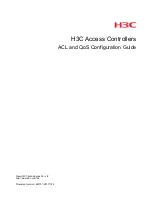
TC1796
System Units (Vol. 1 of 2)
System Control Unit
User’s Manual
5-2
V2.0, 2007-07
SCU, V2.0
5.1
Power Management
This section describes the power management system of the TC1796. Topics covered
here include the internal system interfaces, external interfaces, state diagrams, and the
operations of the CPU and peripherals. The power management state machine is also
described.
5.1.1
Power Management Overview
The TC1796 power-management system allows software to configure the various
processing units so that they automatically adjust to draw the minimum necessary power
for the application.
As shown in
, there are three power management modes available:
•
Run Mode
•
Idle Mode
•
Sleep Mode
The operation of each system component in each of these states can be configured by
software. The power-management modes provide flexible reduction of power
consumption through a combination of techniques, including:
•
Stopping the CPU clock
•
Stopping the clocks of other system components individually
•
Clock-speed reduction of some peripheral components individually
Table 5-1
Power Management Mode Summary
Mode
Description
Run
The system is fully operational. All clocks and peripherals are enabled,
as determined by software.
Idle
The CPU clock is disabled, waiting for a condition to return it to Run
Mode. Idle Mode can be entered by software when the processor has no
active tasks to perform. All peripherals remain powered and clocked.
Processor memory is accessible to peripherals. A reset, Watchdog Timer
event, a falling edge on the NMI pin, or any enabled interrupt event will
return the system to Run Mode.
Sleep
The system clock signal is distributed only to those peripherals
programmed to operate in Sleep Mode. The other peripheral module will
be shut down by the suspend signal. Interrupts from operating
peripherals, the Watchdog Timer, a falling edge on the NMI pin, or a reset
event will return the system to Run Mode. Entering this state requires an
orderly shut-down controlled by the Power Management State Machine.
















































